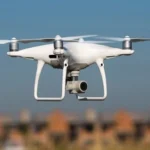Abrasive Jet Machining (AJM) can be defined as kinda an unconventional method of machining in which a stream of very tiny abrasive particles shot at high speed is used to cut, shape, or learn any surface. It is more like a method of using a high-pressure sandblaster, which is very similar to the one that is used for spraying the surface, right? Since the process is cool but the heat production is at a minimal level and it usually doesn’t include direct contact between the tool and the material, this is actually the best method when it comes to working with delicate or heat-sensitive materials. Let’s understand Abrasive Jet Machining pros and cons:

Advantages of Abrasive Jet Machining
1. Works Like a Charm on Heat-Sensitive Materials
A big reason why AJM or Abrasive Jet Machining is so popular is that it can cut and work with materials that cannot stand the heat other traditional machining methods produce, you know? Those traditional processing methods indeed involve a great amount of temperature, which may cause damage to delicate materials like silicon or gallium, that’s for sure. But AJM is a process that produces very little heat. So, when processing materials that have difficulty standing up to high temperatures, AJM comes to the rescue.
2. No Physical Contact = No Worries
In AJM, the nozzle of the tool does not physically touch the work material. And yes, this is crucial in preventing the kind of vibration, which are common in traditional machining processes. So, the result is a very smooth surface finish which often is of a higher quality. Also, this feature prevents any damage that can be caused by the tool pressing against a fragile workpiece.
3. Got Complex Shapes? No Problem!
AJM is the best at creating beautiful shapes and hard-to-reach areas as well. A high-speed stream of abrasive loses particles towards the material to be cut, this is what we call the abrasive jet, making the process shorter but not less accurate. Thus, it can produce very small holes, complex cavities, detailed features, etc.
4. Fragile or Brittle? AJM’s Got You Covered
AJM is especially effective for machining materials that are fragile or brittle, like glass, ceramics, and thin sections of hard materials. Oftentimes, these are materials that can be difficult or even quite impossible to machine using other methods without breaking. The non-contact nature of AJM is indeed very gentle, making it the best choice for these fragile materials so that the work can be done without causing any damage to the fragile part or fragile piece.
5. Smooth as Silk Finish
And yes, we must say that the surface finish achieved through AJM is on another level. And why’s that? Well, the surface that the process can also generate is smooth and there are many other properties such as high resistance of the surface to erosions that it is assumed to have. This makes it more suitable for applications where value is placed on both surface aesthetics and surface durability.
Disadvantages of Abrasive Jet Machining
1. Slow and Steady Isn’t Always What You Need
One of the big negative points of AJM is that it is a procedure of removing material very slowly. The low material removal rate (MRR) of this method makes it a poor choice for those tasks that need the removal of considerable amounts of material or matter in a short period of time. As a consequence, AJM is customarily used for precise or delicate works rather than for the extraction of mass materials, you know?
2. Sometimes It’s a Bit Off Target
AJM may have a few issues in accuracy from time to time, and how’s that? You see, high-speed abrasive elements can lead to stray cutting resulting in materials being cut in areas where they are not meant to. This stray cutting can create less precise shapes and dimensions than what was expected at the very beginning. Also, there is usually a hole tapering effect that occurs with drilling holes whereby the hole widens as it goes deeper. That’s another issue right there.
3. Nozzle Wear and Tear
This process is based purely on the high-velocity jet of abrasive particles that by themselves are very hard and rough. The fact that these particles also wear down the nozzle over time means that the nozzle has to be replaced frequently. This wear and tear can lead to increased maintenance costs and downtime, making it less efficient for long-term, continuous use.
4. Inability to Reuse Abrasive Material
Once the abrasive particles are used they get their sharp edges blunt and become less effective for further machining. This, thus, means they cannot be reused and are to be disposed of at the end of each usage or process. Not only does this contribute to the higher cost of operation but it also leads to waste as abrasives can become unfit for use and need to change frequently after maximum use has been reached.
5. Soft Materials? Not So Much
You see, with AJM, the abrasive particles tend to lodge themselves in the soft materials, which not only gives it a rough surface but also leads to difficulties in its further processing. It is kinda rare and is a problem with really soft material, but yes, it happens. So, while you may hear experts say that AJM is great for soft material, now you know, that’s not exactly true.
6. Post-Machining Cleanup Required
The post-machining stage often involves cleaning the workpiece to get rid of the remaining abrasive particles that might be stuck to the surface. And sure, this extra step stretches the time and energy necessary for the whole process, making it not as efficient as other machining methods that do not require much cleaning.
Comparison Table for Advantages and Disadvantages of Abrasive Jet Machining
| Advantages | Disadvantages |
| Handles heat-sensitive materials like a pro | Slow material removal, not ideal for big jobs |
| No physical contact, no tool marks | Accuracy can be hit or miss with stray cutting |
| Perfect for complex shapes and tight spots | Nozzle wears out quickly, adding to maintenance |
| Excellent for fragile, brittle materials | Abrasive material can’t be reused, adding waste |
| Produces smooth, high-quality finishes | Not great for soft materials, abrasives get stuck |
| Needs post-process cleanup for abrasive residue |

